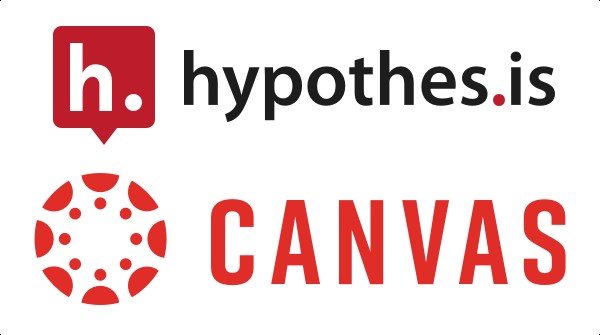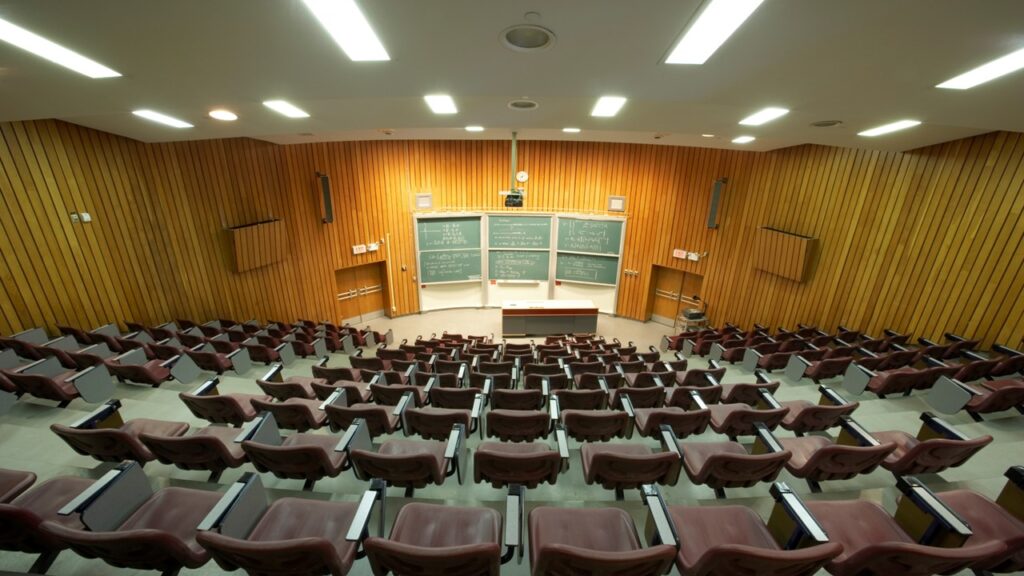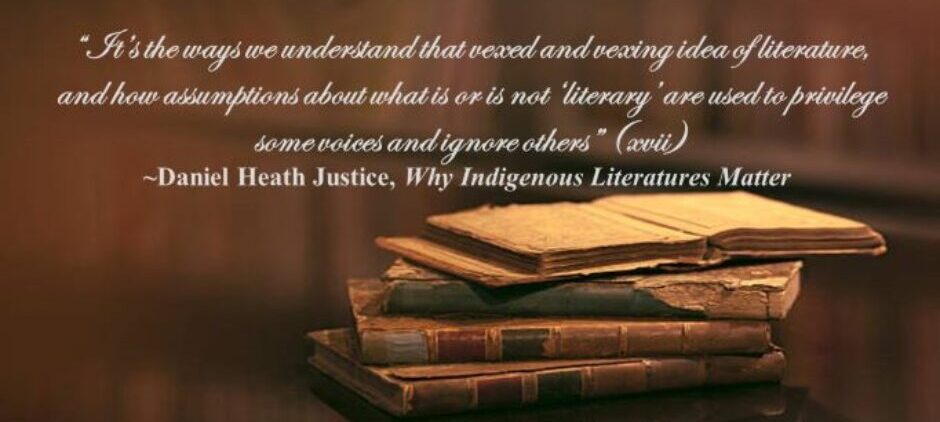
When I taught my very first semester at the college level, I was excited yet terrified and struggled with creating my course description and objectives. My major professor at the time asked me, “What is it that you want your students to get out of your class?” I use this question, even today, to guide myself and my goals in the classroom.

My approach to early American, Native American and Indigenous literary study is creating a classroom environment where students are empowered to freely and without judgment from me or their classmates, can participate in critical discourse and letting them guide the topics. I approach achieving this goal by leading from behind. Leading students from behind allows me to encourage fruitful conversations about varied topics from assigned readings to what current concerns the students may have. Students seem shocked when they are told to make up their own minds about the importance, meaning, or understanding of the materials they read. My recent students, it feels like to me, lack the confidence to formulate their own ideas and position to complex social and political topics. It is my goal to empower my students to think thoughtfully and critically on their own and develop their own position among the myriad of difficult topics of race, diversity, equity, and difference that are so deeply embedded in early American literatures. One of my spring 2020 students remarked on their course evaluation, “Rather than teaching through a method of giving information to the students, and having them regurgitate it on a test, she has given us materials, and guided us through our own interpretation of the materials. She has been able to make me think critically and deeply about the materials we have read, and because of that, I feel like I genuinely learned so much during this course.” Using what my students find most important in a literary work helps them and their classmates see value through participatory engagement with each other and the course materials. For each literary work assigned in my classes, I only have a short, bulleted list of things I want to make sure they engage with. By letting them guide the content from the readings, my students typically discuss topics that are on the list of bullet points in class discussions.

As a practitioner of digital humanities, I often look to technology as a way to engage and work with early American and Native American literatures. Hypothes.is is a digital collaborative annotation application that encourages students’ participation with the assigned reading but also allows me to lead from behind and interact with them on the text. The first semester I used the Hypothes.is annotation application. I asked my students how they liked using the application. One of my students said, “Using Hypothes.is to engage with our readings and classmates helps hold me accountable to read for class.” It had become increasingly clear to me, in previous semesters, that students were not really doing the assigned readings and the discussion boards felt forced with little to no engagement with their peers. In the Canvas LMS, Hypothes.is overlays on the PDF’d reading, students can highlight portions of the text and make comments, add thoughts, or ask questions, peers can reply to each other’s annotations, and I can interact with my students and the text. By my second semester of using Hypothes.is as a teaching tool, I began seeing conversations unfold between students who were reading and engaging one another with the text! It felt like an organic extension of our classroom discussions and students seem to really enjoy interacting with our readings and each other in this way.

Lecturing doesn’t engage students or encourage critical thinking, but creating a safe and judgment-free classroom helps them think through difficult topics. For many undergraduate students assigned readings are the first time they experience these themes, and they often grapple with understanding and synthesizing the material. Letting students choose the topics they would like to work on in a discussion-based classroom and reassuring them that there are no wrong answers generally leads to a variety of viewpoints and synergistic discourse among all students in the classroom. While it is difficult to see my students struggle with candor and comfort at the beginning of the semester, it is worthwhile seeing the freedom and amazement in their faces and attitudes when they are making connections as the class progresses through the semester. I knew that my method was working when I received an email from a student in July of 2020 where my class was working through the sermons of Samson Occom (Mohegan) and how as a minister he used rhetorical moves to subvert colonial racism and advocate for Indigenous survivance. This student conveyed, “…I wanted to thank you for facilitating not only an incredibly informative discussion today, but also a space where these discussions can take place. …I have been discouraged by an acquaintance outside of the classroom from speaking out on issues regarding social justice in Literature courses, especially in reference to my identity…this is one of two classes I have taken where I’ve felt rewarded by the professor for having these kinds of discussions.”

My students invariably provide me with frank feedback that I use to make necessary adjustments to my pedagogy. It is worthwhile to me, to stop and listen to my students and their concerns and feedback. I take their suggestions seriously as to what works or does not work to make adjustments in my pedagogy and create a better learning environment. I have learned so much from my students during seven years of teaching at the college level. Students often know which ways are the most effective for learning, so I make it a point to ask them, seeking their honesty, if even my most tried and tested methods are working. The classes that I teach are not for me and my own amusement, but for my students to learn and experience literatures, cultures, and history they may have never experienced before. I will always keep my pedagogy fluid so that I can encourage my students to grow and learn in a comfortable classroom environment where it is okay if they are not one hundred percent right while letting them discover ways to make the connections to literatures that are most productive for themselves.
